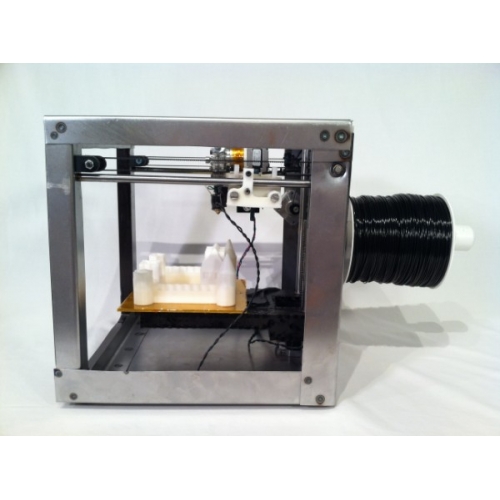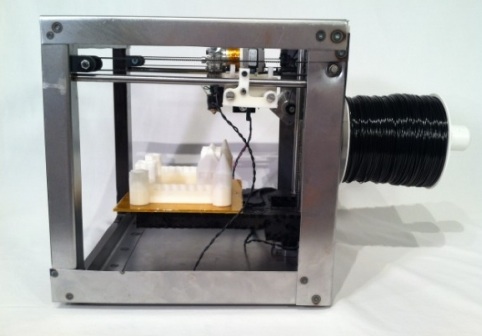Solidoodle 3D Printer Ready for the Home Market

The Solidoodle 3D printer. Courtesy of Solidoodle.
Latest News
May 3, 2012
I am a giant fan of the idea of 3D printers becoming the next common household appliance. More and better open source software and open source printable designs are appearing all the time, along with more reasonably priced 3D printers for use at home. Even the iPad is getting into the act.
I’m not the only one that expects big things to happen in the home market. Small businesses behind 3D printers like the Buildatron and Makibox are focused on that particular crowd, as are offerings by larger entities such as MakerBot and 3D Systems (as can be seen here).
Certain things need to happen before home 3D printers become as widely used as PCs. If you’ve followed the blog for any amount of time, you may recognize the following mantra. The printers need to be affordable, accessible and easy-to-use.
The easy-to-use part is getting better thanks to all the previously mentioned open source software and premade designs. That particular barrier seems almost certain to vanish before too awful long. With ease-of-use out of the way, that only leaves affordable and accessible.
What do I mean by accessible? I mean when a customer buys a 3D printer, they can immediately begin to use it without requiring any sort of technical knowledge. This is a major downfall of systems that require buyers to assemble their new printer from a kit. When was the last time you were asked to build your own television?
Then there’s cost. Even the “affordable” home systems tend to run between $1,000 and $3,000 dollars. I know people who didn’t spend that much on their car. No, affordable is the same range as an iPad, laptop or PC: around $500.
It seems I’m not the only one to think this way. Sam Cervantes, former COO of MakerBot, has started a company that really wants to put a 3D printer in every home. Open source software? Check. Accessible? It comes assembled. Affordable? The Solidoodle hits the $500 sweet spot.
It can’t all be good news though, right? The Solidoodle does have a limited build envelope of 6 x 6 x 6 in. (152.4 x 152.4 x 152.5 mm), but I don’t know how big (no pun intended) of a factor that really is. I wouldn’t expect to be able to print out large prototypes on a $500 system. I’m more likely to print out toys, cell phone covers, key ring charms, etc., and the build envelope is plenty large enough for that.
The Solidoodle uses 1.75mm plastic filament. The thermoplastic extrusion process that goes along with ABS plastic for the home market doesn’t generally have what you’d call the best resolution. This particular system advertises a .3 mm layer thickness and claims the printer can be configured to print at .1 mm thickness. While that might not produce a build you’d want to present to a multinational corporation, it should be plenty fine for hobby use.
Does the Solidoodle represent the first real step toward home market viability? I don’t know, but it certainly seems like a step in the right direction.
Below you’ll find a video about the Solidoodle.
Source: Solidoodle
Subscribe to our FREE magazine, FREE email newsletters or both!
Latest News
About the Author
John NewmanJohn Newman is a Digital Engineering contributor who focuses on 3D printing. Contact him via [email protected] and read his posts on Rapid Ready Technology.
Follow DERelated Topics







